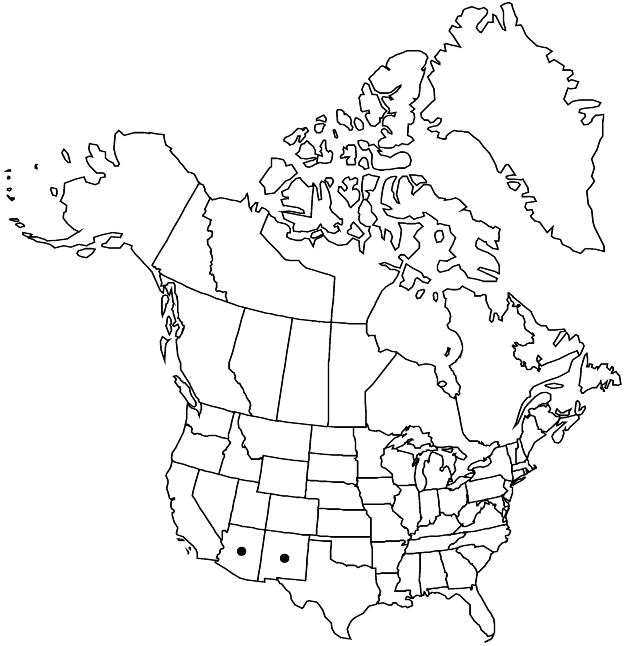Arceuthobium campylopodum subsp. microcarpum
Phytoneuron 2012-51: 10. 2012.
Common names: Western spruce dwarf mistletoe
Endemic
Basionym: Arceuthobium douglasii var. microcarpum Engelmann in J. T. Rothrock
Synonyms: A. microcarpum (Engelmann) Hawksworth & Wiens
Revision as of 23:48, 26 July 2019 by FNA>Volume Importer
Plants forming witches' brooms. Stems yellowish green, green, orange, red, maroon, or purple, 5(–11) cm; third internode 5–9.3(–16) × 1–1.5(–2) mm, dominant shoot 1.5–3 mm diam. at base. Staminate flowers 2.3 mm diam.; petals 3(–4). Fruits 3.5 × 2 mm.
Phenology: Flowering (Jul–)Aug–Sep; fruiting (Aug–)Sep(–Oct).
Habitat: Coniferous forests, especially with blue or Engelmann spruce.
Elevation: 2400–3200 m.
Discussion
Meiosis occurs in July, with fruits maturing 12 to 13 months after pollination.
Subspecies microcarpum is a serious pathogen on its principal hosts, Picea engelmannii and P. pungens, as well as on Pinus aristata in northern Arizona. Rare hosts include Abies lasiocarpa and Pinus strobiformis. Interestingly, this mistletoe is not found in the central Rocky Mountains where its principal hosts are most abundant.
Selected References
None.
Lower Taxa
None.
